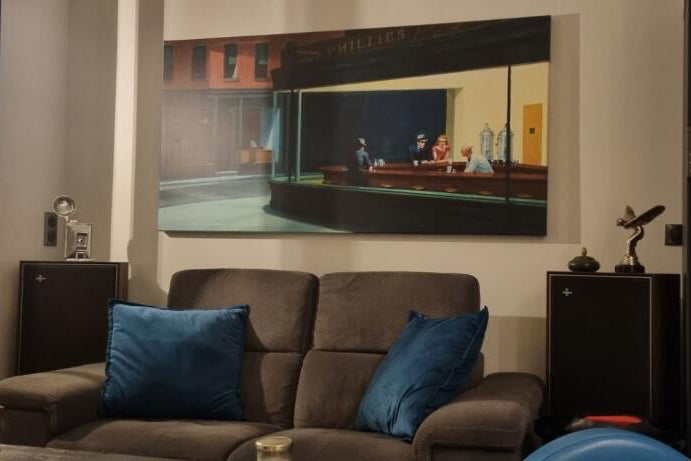Art print | At the Moulin Rouge - Henri Evenepoel Source: Reproduction | Au Moulin Rouge - Henri Evenepoel


View from behind

Frame (optional)
Henri Evenepoel's art print "At the Moulin Rouge" immerses us in the heart of Parisian life at the end of the 19th century, a period marked by a flourishing of artistic and cultural expression. This vibrant canvas, bursting with color and energy, depicts a lively scene at the famous cabaret, an emblem of a society in full effervescence. Gazing at this art print, the viewer is transported into a universe where dance, music, and the art of living intertwine, perfectly illustrating the carefree spirit and exuberance of La Belle Époque. The composition, both dynamic and harmonious, invites complete immersion into this festive atmosphere, where each character seems to tell a story, and every gesture captures the very essence of joie de vivre.
Style and uniqueness of the art print
Henri Evenepoel is distinguished by a style that combines Impressionism with Post-Impressionist influences, creating a unique atmosphere that characterizes his works. In "At the Moulin Rouge," the brushstrokes are both lively and delicate, giving the scene an almost tangible texture. Light plays a crucial role, illuminating the faces of dancers and spectators, while shadows add striking depth to the overall composition. The colors, nuanced and varied, oscillate between warm tones and darker shades, evoking the warmth of the Parisian nightlife. Evenepoel manages to capture not only the physical appearance of the characters but also their emotions, making the art print deeply human and touching. This ability to blend technique and sensitivity makes "At the Moulin Rouge" a masterpiece of modern art, demonstrating the importance of individual expression in artistic creation.
The artist and his influence
Henri Evenepoel, though less well-known than some of his contemporaries, left his mark on his era with a unique artistic vision. Born in Brussels, he was quickly influenced by the Impressionist movement, but he also incorporated elements of his own cultural heritage. His career, tragically cut short by his premature death, left an indelible imprint on the European artistic landscape. Evenepoel was able to capture moments of everyday life with such

Matte finish

View from behind

Frame (optional)
Henri Evenepoel's art print "At the Moulin Rouge" immerses us in the heart of Parisian life at the end of the 19th century, a period marked by a flourishing of artistic and cultural expression. This vibrant canvas, bursting with color and energy, depicts a lively scene at the famous cabaret, an emblem of a society in full effervescence. Gazing at this art print, the viewer is transported into a universe where dance, music, and the art of living intertwine, perfectly illustrating the carefree spirit and exuberance of La Belle Époque. The composition, both dynamic and harmonious, invites complete immersion into this festive atmosphere, where each character seems to tell a story, and every gesture captures the very essence of joie de vivre.
Style and uniqueness of the art print
Henri Evenepoel is distinguished by a style that combines Impressionism with Post-Impressionist influences, creating a unique atmosphere that characterizes his works. In "At the Moulin Rouge," the brushstrokes are both lively and delicate, giving the scene an almost tangible texture. Light plays a crucial role, illuminating the faces of dancers and spectators, while shadows add striking depth to the overall composition. The colors, nuanced and varied, oscillate between warm tones and darker shades, evoking the warmth of the Parisian nightlife. Evenepoel manages to capture not only the physical appearance of the characters but also their emotions, making the art print deeply human and touching. This ability to blend technique and sensitivity makes "At the Moulin Rouge" a masterpiece of modern art, demonstrating the importance of individual expression in artistic creation.
The artist and his influence
Henri Evenepoel, though less well-known than some of his contemporaries, left his mark on his era with a unique artistic vision. Born in Brussels, he was quickly influenced by the Impressionist movement, but he also incorporated elements of his own cultural heritage. His career, tragically cut short by his premature death, left an indelible imprint on the European artistic landscape. Evenepoel was able to capture moments of everyday life with such










